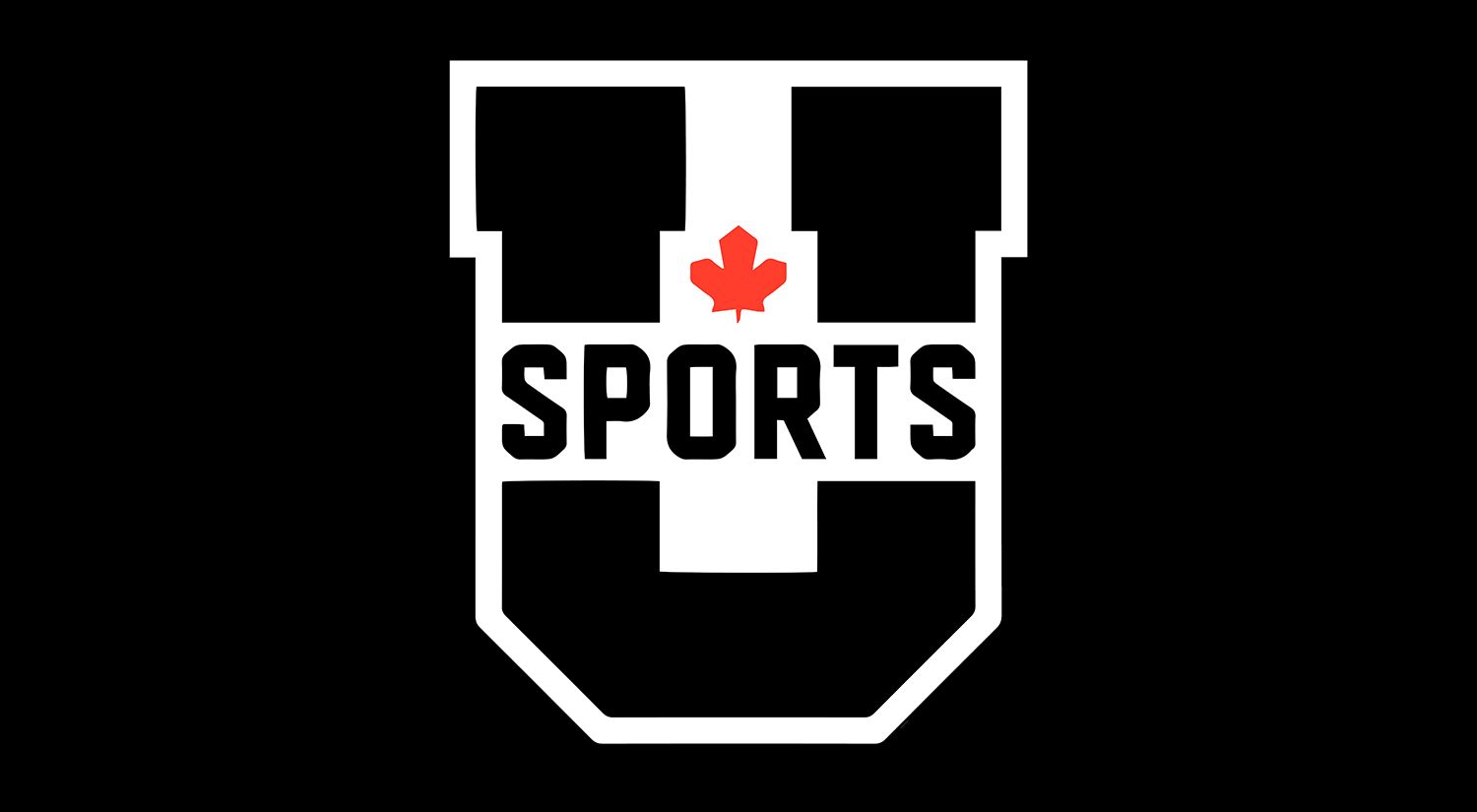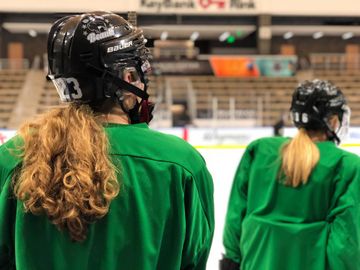On September 27, U Sports, the national governing body for university sport in Canada, released its transgender inclusion policy. The policy applies to approximately 14,000 student-athletes at its 56 member universities. [1] The policy takes effect immediately, and is a welcomed addition the Canadian sports landscape.
Prior to the 2018-2019 university sports season, U Sports had no specific trans-inclusion guidelines or regulations, despite nearly two decades of dialogue about trans participation in elite sports. Before this announcement, trans student-athletes in Canada had to make difficult and deeply personal decisions that pitted their sporting careers against their identities in an environment with no standardized practice or guidance. Approval to participate was granted or denied on an improvised and inconsistent basis that differed from institution to institution, sport to sport, and even coach to coach. For those who medically transitioned, participation often remained frustratingly out of reach.
The impetus for this new policy is not solely a sports-related matter. Since 2002, governments in Canada have been working towards protecting gender diverse people as a matter of civil rights. In 2002 the Northwest Territories became the first territorial or provincial government to include gender identity in anti-discrimination laws. It would be another decade before another government in Canada moved to protect gender diverse people. In 2012 the governments of Ontario, Nova Scotia, and Manitoba [2] passed legislation to protect gender identity and gender expression across those provinces. Between 2013 and 2016 all but New Brunswick, Nunavut, and Yukon followed suit.
With federal protections on the horizon, the three remaining provincial and territorial governments passed legislation protecting gender identity and gender expression. Bill C-16 received royal assent in June 2017 [3], resulting in gender identity and gender expression protections federally. Gender identity and gender expression are now protected in anti-discrimination laws everywhere in the country.
U Sports needed a trans inclusion policy because all 56 of its member universities operate in jurisdictions that explicitly protect gender identity and gender expression from discrimination [4]. Not having a policy in place left U Sports vulnerable to discrimination lawsuits.
On the surface of things, this policy is a welcomed improvement from the ad-hoc and discriminatory nature of the conditions trans student-athletes previous faced in Canadian university sports. But ultimately, it still maintains the status quo that prioritizes cis athletes' comfort rather than gender diverse athletes' basic humanity.
The new policy puts in writing that trans athletes have a right to participate in competitive university sports. My hope is that this policy will be a catalyst for a similar measure from the Canadian Collegiate Athletic Association (CCAA) [5], the national governing body for college-level elite sports in Canada, which does not have a gender diverse (or even trans-specific) inclusion policy or gender diverse anti-discrimination policies. The CCAA must protect the rights of gender diverse student-athletes explicitly; developing a gender diverse inclusion policy would ensure this. That trans student-athletes face restrictions and fewer playing opportunities solely because the attend a certain type of post-secondary institution is unacceptable – and the U Sports policy pressures the CCAA to catch up.
The U Sports policy gives trans athletes a choice to participate with either the gender they were assigned at birth or the gender with which they now self-identify. The agency of trans student-athletes is respected; only trans athletes know which gendered competition best suits them, only trans athletes know which situations work for them, only trans student-athletes can know which situations offer the greatest safety. Too many sporting bodies refuse to acknowledge that trans athletes need these options because the sporting environments created for cis athletes, divided along the cis gender binary in which girls' and women's sports is dramatically underfunded, are hostile to gender diverse athletes. Without a related effort to challenge the gender discrimination inherent in sport, gender diverse athletes will continue to make decisions based on safety.
One component that separates these regulations from regulations developed by other sporting bodies, is the stipulation that: "In accordance with the CCES guidance report, U SPORTS' approved policy does not require student-athletes to undertake hormone therapy in order for them to compete in the gender category that is consistent with their gender identity."
Trans people have the right to determine what medical transition looks like for them or if they pursue hormone treatments or confirmation surgery. This line is revolutionary because it prioritizes the needs of trans athletes and because it respects that trans individuals are the experts when it comes to their transitions. Trans people have the right to determine medical transition isn't for them. Either option is valid, and trans individuals must be supported economically and institutionally as they make these decisions. However, most trans inclusions policies require trans athletes undertake specific forms of medical transition. To require specific medical procedures for trans athletes violates the rights of trans athletes. [6]
But this policy still fails to protect gender diverse athletes in crucial ways. Disappointingly, the stipulation that trans athletes are not required to undergo hormone therapy is undercut by the stipulation that "student-athletes will be eligible to compete on the team that corresponds with either their sex assigned at birth or their gender identity, provided that the student-athlete complies with the Canadian Anti-Doping Program." The Canadian Anti-Doping Program is WADA compliant. Among other things, WADA has specific limits for the testosterone amounts athletes participating in women's sports can have in their system. [7] This stipulation means most amab athletes will have to undergo hormone therapy to participate in women's sports and afab athletes who wish to participate in women's sports will have to delay hormone therapy.
This condition is in line with most existing "inclusive" trans inclusion policies. Most cis people will not see any problem with it. Binary trans folks who undergo hormone therapy will be able to participate in sports that correspond with their gender identity. There will be trans athletes who accept these regulations because it guarantees some of us will be able to participate. But it still places undue burdens on gender diverse athletes. This regulation ensures trans women and amab folks who wish to participate in women's sports face additional costs, costs cis student-athletes don't have. While some university health plans cover hormone therapy, most only cover a percentage of the cost. [8] Requiring hormone compliance is always a tax on trans women and other amab gender diverse folks.
While I welcome the inclusion and acceptance of talented trans student-athletes, I find it hard to understand why sports governing bodies are unable to create a policy that is inclusive of all gender diverse individuals and a policy that isn't actually about prioritizing cis folks' comfort and superiority.
Like the majority of trans inclusion policies, U Sports regulations limits the choices of non-binary student-athletes. While some non-binary student athletes identify as trans and as such are covered by these regulations, many do not. Without specifically naming and ensuring the inclusion of non-binary athletes, inclusion policies can never be truly inclusive. By strictly maintaining the cis gender binary (as U Sports has done by upholding anti-doping policy) non-binary athletes are discriminated against. Non-binary athletes have the right to play, have the right to medically transition should they require or want it, and they have the right to do those things while participating in the gendered sports activities that works for them, even if it doesn't work for cis people, prioritize cis people, or make sense to cis people.
Further, all Canadian provinces protect a broader definition than "trans" by explicitly protecting gender identity and gender expression. Ironically, U Sports has managed to create an inclusion policy that technically violates the laws it is attempting to satisfy – though because of the general disregard for non-binary folks and other gender diverse individuals, it is unlikely that this was considered by U Sports when drafting its policy. Regardless, non-binary student-athletes are protected by these laws as are other gender diverse athletes. To regulate what that transition looks like for the purpose of elite sports is unacceptable and a violation.
Like every elite sport governing body, the U Sports regulations equate specific gender-related healthcare needs with cheating. Medical transition, including confirmation surgery and hormone treatment, are personal decisions for gender diverse people. Gender diverse athletes should be supported in making the decisions that are best for them as individuals; some gender diverse athletes do not wish to medically transition, while for others, medical transition, including hormone therapy, is literally lifesaving. These decisions should not be impacted by sporting eligibility. Instead, gender diverse athletes should be able to receive Therapeutic Use Exemptions (TUE) if they wish or require hormone therapy. Medical transition, including hormone therapy, is part of many gender diverse people's identity and expression. Restricting this access to protect arbitrary and discriminatory definitions of "fairness" that privilege cis athletes to the detriment of gender diverse athletes discriminates against gender diverse athletes.
It also calls into question the priorities of U Sports. The Canadian university system has always been a preparatory ground for elite athletes who go on to international success, especially in individual disciplines, like track and field and rowing, or to leagues like the CFL. However, in recent years and especially since Canadian Interuniversity Sport (CIS) rebranded as U Sports in 2016, the professionalization of the Canadian university sports system has increased.
What was once a system that provided elite competition for university athletes is increasingly a training ground for future professional athletes. A system that wants to produce professional athletes has a vested interest in adhering to WADA and similar regulations. A system that wants to produce professional athletes is simply doesn't care about achieving fairness for gender diverse athletes. Until governing bodies begin creating more inclusive policies that push back at WADA, the overall sports landscape is going to remain in a holding pattern – one that's both discriminatory and unfair for gender diverse athletes, and that maintains cis hegemony.
Notes:
[1] There are 96 universities in Canada, 56 of which are U Sports members. U Sports is comprised of four regional associations: Atlantic University Sport (AUS) for the four Atlantic provinces, Réseau du sport étudiant du Québec (RSEQ) for Quebec, Ontario University Athletics (OUA) for Ontario, and Canada West Universities Athletic Association (CW) for the four western provinces.
[2] Manitoba has implicitly protected gender expression since 2016.
[3] Bill C-16 received royal assent on June 19, 2017. The Bill ensures gender identity and gender expression are protected under the Canadian Human Rights Act and Criminal Code, makes it illegal to discriminate on the basis of gender identity and gender expression and broadens hate speech laws to include those terms.
[4] In Canada, legal jurisdiction in terms of the Human Rights Act is split between the federal government and the territorial/provincial governments. Some employers and service providers, such as First Nations governments, banks, and airlines, are federal responsibilities. Other employers and services providers, such as universities, are provincial responsibilities.
[5] There are 94 colleges participating in 5 conferences in the CCAA.
[6] For a comprehensive list of elite sports gender diverse regulations, please see The Opposite of Fair Play: Part III.
[7] For more on how testosterone levels are leveraged against athletes participating in women's sports, click here.
[8] Full disclosure: I have not read every undergraduate and graduate health care plan for each university in Canada.



